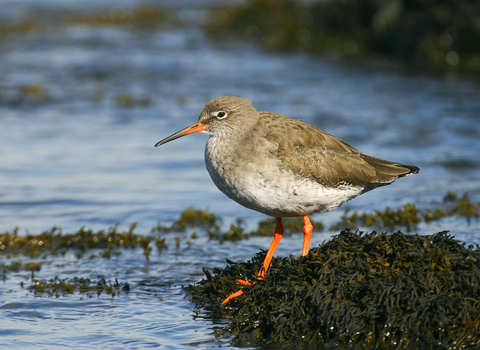
Redshank © Tom Marshall
Redshank
The redshank lives up to its name as it sports distinctive long, bright red legs! It feeds and breeds on marshes, mudflats, mires and saltmarshes. Look out for it posing on a fence post or rock.
Scientific name
Tringa totanusWhen to see
January to DecemberSpecies information
Category
Statistics
Length: 27-29cmWingspan: 62cm
Weight: 110-130g
Average lifespan: 4 years
Classified in the UK as Amber under the Birds of Conservation Concern 5: the Red List for Birds (2021).
About
The redshank is a large sandpiper with long, bright red legs. It is a typical wader, feeding in shallow water around lakes, marshes, mudflats and coastal wetlands. It breeds on open marshes, mires and saltmarshes, particularly in Scotland and northern England. Look for it typically posed on top of a post, fence or rock in wet grassland or farmland areas.How to identify
Brownish all over, with a paler belly, the redshank is one of only two waders that has bright red legs; the spotted redshank also has red legs, but is slightly larger, with longer legs and a longer bill. The redshank has a straight bill, which is red at the base and black at the end. When it flies, it shows a white triangular wedge up its back and a wide, white triangle on its rear.Distribution
Widespread, but breeding birds are especially prevalent in Scotland and Northern England. Wintering birds can be seen in large numbers around estuaries and coastal wetlands.Did you know?
Large numbers of redshank fly here from Iceland to spend the winter around our coasts.Watch
Redshank (https://vimeo.com/453689621)
Redshank by Tom Hibbert
